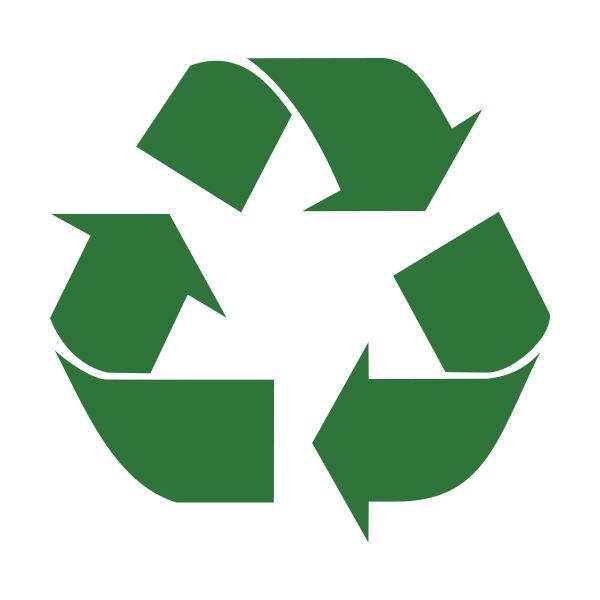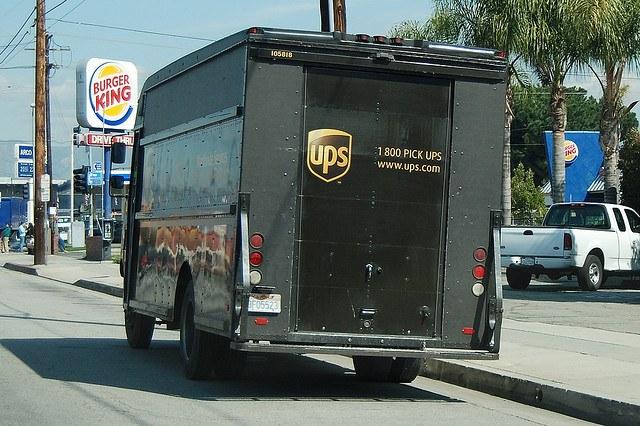How to Make Corporate Giving a Foundation That Strengthens Your Business


By Zeynep Ilgaz
It should go without saying that giving back is a good thing. Every member of society benefits from the health of the community, and as members of a corporation, we should always be conscious of the power we have to bring about good in the world. Giving to the less fortunate is an admirable act.
However, like a lot of good deeds, corporate philanthropy doesn’t just benefit the recipients. It also benefits those who are giving. Make corporate giving a foundation of your business, and you’ll find that it can improve the morale of your employees and the health of your company.
The benefits of a giving lifestyle
We’ve already discussed the most obvious benefit: helping out those who need it most. However, there are other factors to consider when it comes to corporate giving:- Your employees: Keeping your employees engaged in their work and passionate about what they do can sometimes be a challenge. Give employees a chance to be involved with charity work, and they will feel proud of their company and of themselves. This, in turn, can reinvigorate an employee in other areas of his or her work.
- Your brand: While your reputation is not the reason you give, it does matter to your audience. They want to do business with a company that cares about the broader community. A 2013 study by Cone Communications and Echo Global found that 91 percent of global consumers were likely to switch to a brand that supported a good cause, given similar price and quality. If you align your business goals with support for a cause, your customers will realize that you and your staff are about more than just selling.
How to incorporate it into your business
While the benefits of corporate giving may be clear, it might not be easy to see where it fits into the day-to-day duties of work life. But with a few simple guidelines, you should find it easy to fit charity into your business model and into the lives of your employees.- Schedule a specific day and time when community-related items can be discussed. This way, it’s clearly defined as an integral part of your business, and it has the opportunity to become routine.
- When scheduling events, do so well in advance of the date, trying for off-hours or days when the workload is lighter than normal. Employees want to be involved, but they also don’t want to feel as if they’re sacrificing productive hours to do so. Carving out blocks of time dedicated to philanthropy means employees don’t have to feel conflicted about participating.
- Involve your staff directly. Getting your employees involved is crucial to boosting morale. There are a number of ways to do this. At our company, we divide employees into teams and let them choose an organization they think would be a worthy recipient. This gets employees involved on the ground floor and helps ensure that they care about the cause.
Put the money in the right place
There’s one more challenge facing companies when it comes to doing philanthropy right: choosing the right charities. Here are a few things to keep in mind when deciding on the right cause for your business:- Keep it in line with your core values. Try to relate your charity work to what your business does. For instance, our company provides drug testing products and services; therefore, we focus our giving on causes that promote a drug-free lifestyle. Not only does this make it more likely for our employees to care about our cause, but it also helps our brand image in our target area.
- Talk to your team. It’s possible that you have employees with personal stories about how they were affected by misfortune. Give to causes that your employees have a personal connection with. They will be more passionate about helping others and will be proud to work for a company that cares about the same things they do.
- Think local. Improve your local community, and you’ll improve the lives of your employees. It also helps to bolster your image with the people who surround you.
- Support schools. It’s always good to look toward the future, and the people in school now are the innovators and business leaders of tomorrow. Supporting schools is supporting the future.
- Get the family involved. Group activities, like food drives, can be good ways to get employees’ families involved in charity work. This can increase the personal bond employees have with their work, and it enables everyone to get to know each other better.
Originally from Turkey, Zeynep Ilgaz and her husband immigrated to the United States with nothing but two suitcases, a love for each other, and a desire for entrepreneurship. They co-founded Confirm BioSciences, where Ilgaz serves as president. As the global leader in the field of lab and instant testing for drugs of abuse and health, Confirm BioSciences is committed to being on the cutting edge of offering new, service-oriented drug testing technologies. Find Zeynep on Google+.
Air leak detection helps Nissan win environmental award


Combing through miles of tubing in the compressed air system in Nissan’s manufacturing facilities and repairing enough leaks to save 11,300 megawatt hours of energy last year, has helped the automotive giant to win the US Environmental Protection Agency 2014 Energy Star Partner of the Year – for the third year running.
"We saved enough energy to power more than 700 homes for a year, offset the greenhouse gas emissions of nearly 2,800 tons of landfill waste or better yet, to drive the all-electric Nissan Leaf around the earth more than 40,000 times," said John Martin, Nissan's senior vice president, Manufacturing, Supply Chain Management and Purchasing.
A common industrial challenge, the Nissan team estimated that more than 20% of compressed air used in manufacturing operations was wasted through air leaks at Nissan's US manufacturing facilities.
The team also learned how to catch a ray of sunlight to use it for lighting in a Nissan plant in Tennessee. The daylight harvesting technique - along with new skylights - allows for more optimal lighting inside the plant while using substantially less energy.
New rallying cry to halt use of plastic carrier bags


With the average person in England using 133 carrier bags a year, the Break The Bag Habit coalition has launched a new website to encourage supporters to pledge to stop using them.
The campaign highlights the fact that 10.6 billion single-use bags will be handed out at shops in England before the bag charge comes into force on 1 October 2015.
The new Break The Bag Habit pledge website is supported by the internationally acclaimed photographer Martin Brent with a bespoke series of images entitled “Killer Bags”. These images feature actual single-use plastic bags Brent was confronted with whilst diving.
The Break The Bag Habit coalition is also urging supermarkets to adopt the charge as soon as possible.
Andy Cummins, spokesperson for the Break the Bag Habit campaign, commented: “We call on retailers to listen to their customers and voluntarily introduce the charge in October across their stores. With 7 billion bags being used every annually, there’s certainly no reason to delay it for 18 months.”
Supporters making the pledge to stop accepting single-use bags will learn how many bags they have personally offset and their pledge will be added to a grand total, highlighting the number of bags prevented from entering the environment or waste streams nationally before the bag charge comes into effect.
Unilever makes major strides on zero waste


Unilever’s factories across Europe have joined those in North America in achieving zero non-hazardous waste to landfill.
With similar achievements in countries from Argentina to Indonesia, it means more than three-quarters of the fmcg giant’s global factory network no longer sends such waste to landfill, up from 20% just three years ago.
Under the Unilever Sustainable Living Plan, by 2020 total waste sent for disposal will be below 2008 levels, despite growing the business significantly. The achievement to date has been made possible with minimal need for capital expenditure and has avoided cumulative disposal costs of more than €17m.
Pier Luigi Sigismondi, Unilever chief supply chain officer, commented: “We have seen a rapid acceleration in converting the network to zero waste. In 2010, 52 sites were there. We have now reached 200 sites. We are on track to hit our revised target of 100% of sites by 2015, five years ahead of the original 2020 target. I am proud of the team effort which has got us to this milestone.”
Later this month, the Unilever Sustainable Living Report 2013 will be published, and will confirm that Unilever has reduced total waste sent for disposal by 66% per tonne of production since 2008.
Picture credit: © Pn_photo | Dreamstime.com
Southeastern Cities Look to Max Out the Triple Bottom Line Returns of Recycling


Editor's Note: This is the second post in a two-part series examining the recycling industry and job creation. In case you missed it, you can check out Part I here.
Recycling is a growth industry in the U.S. and around the world, with resource scarcity, cost reduction, and the basic human need and desire for clean, healthy air, land and waters all driving growth.
As was pointed out in Part I of this two-part series, the economic, as well as social and environmental, benefits of recycling are underappreciated and undervalued here in the U.S., where recycling rates lag those of other industrialized nations, however.
Under the aegis of the Southeast Recycling Development Council (SERDC), manufacturers with operations spanning 11 Southeast U.S. states have joined together to raise awareness and boost recycling rates. They're not the only ones who see significant benefits and advantages from increasing recycling rates in the U.S.
Recycling: Profitable for businesses and governments alike
Way back in 2001, the groundbreaking U.S. Recycling Economic Information (REI) Study found that annual gross revenue for the U.S. recycling and reuse industry totaled some $236 billion and “is competitive with other major industries, e.g. food manufacturing, in employment and annual salaries.”
According to the EPA, which commissioned the report in concert with the National Recycling Coalition and states across the country:
"[E]specially significant is the finding that recycling far outpaces the waste management industry because recycling adds value to materials, contributing to a growing labor force. Recycling also provides a large number of jobs that generally pay above the average national wage."
There's a strong multiplier effect at work in the recycling sector as well, REI researchers found. In addition to the 1.1 million Americans directly employed in the recycling industry as of 2001, there was an additional 1.4 million jobs with a total payroll of $52 billion in businesses supporting the recycling and reuse industry. Hence, some 2.5 million people around the U.S. relied on jobs in the recycling and reuse sector for their livelihoods.
The ripple effect of factoring indirect and induced impacts resulting from recycling is evident in South Carolina, where, "The total income impact of recycling is estimated to be $1.5 billion in 2005, which the State estimated would generate $30,604,726 in sales taxes and $38,674,883 in income taxes."
Manufacturers look to boost recycling in the Southeast
The EPA's regional overview of the economic impact and benefits of recycling and reuse is chock full of examples of local and regional businesses participating in SERDC and EPA initiatives. These include SP Newsprint Co. in Georgia; KW Plastics in Alabama; Coca Cola, which is operating one of the world's largest PET (Polyethylene Terephthalate) recycling plants in Spartanburg, SC.; Recycling Marketing Cooperative of Tennessee (RMCT); Mohawk Industries in Georgia; and Atlanta's Novelis, the world's largest aluminum recycler.
These businesses need more recyclable material to feed their manufacturing operations. Curbside Value Partnership estimated that $1.2 billion worth of potential recyclable materials are thrown away in the eight states that make up EPA Region 4.
As SERDC's Sagar highlighted:
“The Southeast is home to much of national manufacturing capacity that relies on recycled materials...Unfortunately, as far as recycling programs go, participation is poor. It's problematic because much of the material that's right here at hand is lost. Hence, manufacturers in the region have to look to other regions, and even overseas, for feedstock.”
Spurring greater participation in recycling seems like an intractable challenge, however. Back in 2006, Dwight Ensley, president of the Ensley Corporation in Reidsville, North Carolina stated:
“There are enough plastic bottles going into the landfills of the Carolinas to run our plastic recycling plant 24 hours per day, 7 days per week. But due to low recycling rates, we must ship plastic from all over the US including the West Coast, the Upper Midwest, and New England, as well as Canada, Mexico, and Puerto Rico. Although we are located in the Southeastern US, less than 50% of our supply comes from this region.”
From fixed fees to Pay-As-You-Throw
One means of spurring Americans to recycle more that is being explored is shifting from flat, fixed fee rate structures that municipalities have typically charged for waste disposal to a variable Pay-As-You-Throw (PAYT) rate structure based on the number of bags or cans of trash collected or, in some locales, their weight.
Implementing a PAYT rate for municipal solid waste (everyday household trash) creates a direct economic incentive to recycle more and produce less waste, proponents assert. Doing so entails municipalities charging a variable fee based on weight or volume for each trash bag or can picked up.
A survey in Iowa found recycling increased an average of 50 percent after PAYT was implemented. In Athens-Clarke County Georgia's PAYT program, downtown businesses and residents pay $1 for each county-issued trash bags, while recycling bags are free. The two types of bags are clearly labeled "trash" or "recycle."
There were over 7,000 PAYT programs across the U.S. as of 2006, representing about 25 percent of U.S. communities, according to the EPA. Collectively, they're removing from 4.6 million to 8.3 million tons of municipal solid waste out of landfills, saving 61 million to 109 million MBTUs of energy and saving residents on disposal fees and property taxes.
As the EPA states in its Southeast Region 4 recycling fact sheet:
“By collecting more recyclable commodities from homes and businesses, the Southeast can help set the stage for the future expansion of current manufacturing operations that demand recycled material. That expansion will result in more jobs, increased tax revenue, and an overall brighter economic picture for the region. Recycling is a sustainable investment, one that reaps benefits for both your local community and the Southeast region as a whole.”
SERDC 120
SERDC's efforts to spur recycling across the Southeast are ongoing. It's currently in the final stages of a project that brings together manufacturers, NGOs, and state and local government agencies to better coordinate and raise the profile of recycling initiatives across the region.
SERDC 120 is a collective, 120-day effort to “engage industry in voluntary public-private partnerships to make strategic, one-time, leveraged investments that sustain higher levels of recovery through the adoption of proven best practices in municipal recycling programs.”
Drawing on the expertise of many of the leading packaging and recycling experts in the U.S., SERDC 120 members have been meeting to define clear opportunities with the potential to boost recycling rates. By pooling funds from those members who opt into a coordinated recycling effort, SERDC 120's outcomes are expected to “result in recycling successes far stronger than individual investments alone,” the nonprofit organization states.
With the planning stage wrapping up in May, the initiative's plan is to begin launching recycling projects in target Southeast cities in late 2014 through 2015 and beyond.
Image credits: Re3.org
Extreme Action: UPS Fires 250 in New York After 90-Minute Protest


In a demonstration of the power of corporations over workers, unionized or not, UPS began firing 250 Teamster drivers in Queens, N.Y. last week after they dared to stage a 90-minute protest of the firing of long-time employee and union activist Jairo Reeves.
According to news reports from Business Insider and the New York Daily News, which broke the story, the unionized drivers at UPS’s Maspeth facility got their walking papers because they walked off the job briefly on Feb. 26.
Twenty employees were terminated on March 31 after their shifts — and the remaining 230 were notified that they’ll be fired as soon as replacements are trained, company spokesman Steve Gaut said. He added that the drivers knew their jobs were on the line when they chose to walk out. UPS employs 1,400 workers at the Maspeth distribution center where the protest occurred.
Steve Curcio, 41, a 20-year employee earning $32 an hour was quoted saying: “They just called me in ... (and) said, ‘Effective immediately, you are no longer on the payroll.’”
The mass firing has enraged the head of the International Brotherhood of Teamsters Local 804, Tim Sylvester, who said: “UPS takes millions from the city and yet it’s going to bankrupt 250 families just because our guys stood up for a fellow worker.” Reeves apparently was fired due a dispute over hours.
Sylvester was referring to a UPS contract worth $43 million to provide delivery services to city and state agencies, according to documentation from city officials. The company is also enrolled in a Department of Finance program that saves it millions annually on fines and fees for parking tickets. The program expedites ticket payment and in some cases halves or wipes out penalties.
"They took a grievance with one employee and turned it into notices of termination with 250 workers," New York City Councilman Jimmy Van Bramer told The Queens Courier. “That’s outrageous.”
“These are middle class jobs that sustain families, and we can ill afford to have (so many) adversely affected by a rash decision,” said Public Advocate Letitia James, in the news report. She’s written UPS, asking the company to abandon its hardline approach. “We’ve given UPS breaks, particularly as it relates to this (parking) program,” James said. “They should not treat workers in this manner.”
"The company fired a group of drivers to try to divide us, create panic, or try to get Local 804 to cave in and sell out. That is not going to happen," the union wrote on its website.
Local politicos are gearing up to try to defuse a potentially volatile continuing situation, so stay tuned. This could be a good test of wills between a powerful company and one of the more powerful unions still standing. Did UPS think no one would notice?
Image credit: United Parcel Service (UPS) Delivery Truck by Navymailman via Flickr
Honey Maid Defends Its Ad Featuring 'Nontraditional' Families


In early March, Honey Maid launched its “This Is Wholesome” ad campaign featuring several “unconventional” families – a family with two dads, a mixed-race family, a “rocker” family, a military family and a single dad and his son. The 30-second commercial normalized these “atypical” families – showing them engaging in everyday activities like taking walks, getting dressed in the morning or enjoying Honey Maid’s iconic graham crackers. And – even more revolutionary – the ad made the assertion that these families are just as wholesome as the 1950s stereotypical family: a mom, dad, 2.5 kids and dog -- an archetype that many would argue was actually more uncommon than such “nontraditional” families.
“No matter how things change, what makes us wholesome never will,” the ad says. “Honey Maid: Everyday wholesome snacks for every wholesome family.”
But after the ad drew criticism from religious and anti-gay circles over the family with two gay dads portrayed in the commercial, the company released a follow-up video on social media last week, addressing both the negative and positive comments it received. Entitled simply “Love,” the video begins by displaying some of the ad’s disapproving feedback: “Horrible, NOT ‘WHOLESOME,” and “Disgusting!” Honey Maid then says it asked two artists to turn the online hate mail into something else: The video shows artists rolling up individuals pieces of paper, each with a negative comment printed on it, and squeezing glue on each piece to form some sort of structure. At first, the viewer may be discouraged by what seems like a huge amount of critical responses to the ad. Then the camera pulls back, and you see that the artists have used the paper rolls to write out the word, “Love.”
As if that wasn’t enough to bring a tear to your eye (yes, this ad about graham crackers is so powerful it may bring you to tears), the video continues, saying that the company received over 10 times as many positive comments than negative ones: “Family is family” and “Makes my heart happy,” just to name a few. The artists roll up pieces of paper with supportive feedback and place it around the “Love” structure, so the room fills up with these new paper rolls, and the viewer sees the overwhelming amount of commendation Honey Maid earned for the original campaign – so much that it literally and visually overwhelms the word, "Love."
This proves, the company says, “that only one thing really matters when it comes to family,” and that is, of course, love. The video had more than 1.5 million views on its first day online, the New Yorker reported.
It was no surprise that Honey Maid’s “This Is Wholesome” commercial raised eyebrows: Coca-Cola found itself embroiled in controversy earlier this year after the beverage giant’s “It’s Beautiful” Superbowl ad intimated that individuals of different ethnicities and cultures and a family with two dads were all-American. And last year, Cheerios was besieged with so many nasty comments for its commercial featuring an interracial family that it had to block the ad’s YouTube comments.
While the volume of criticism over corporate commercials that spotlight “nontraditional” families or Americans is disheartening, Honey Maid’s “Love” video reminds us that these types of campaigns also receive a significant amount of praise and support, which is probably why many companies are coming to the conclusion that discrimination of any kind is bad for business: Whether it’s the National Football League looking for alternative Superbowl venues in case Arizona had passed a bill allowing businesses to refuse services to individuals based on religious beliefs or OkCupid blocking its dating service on Firefox browsers due to the Mozilla CEO’s stance against same-sex marriage.
And now, with commercials like those from Honey Maid, Cheerios and Coke, it seems like some companies are moving beyond avoiding discriminatory policies and practices to promote inclusion as part of their brand – and they’ll stand by their position, whether its Cheerios bringing back its controversial mixed-race family in later commercials or this follow-up “Love” video from Honey Maid.
You can watch the original “This Is Wholesome” commercial here and learn more about the families shown in the ad through documentaries on Honey Maid’s YouTube channel.
Image credit: Flickr/Andrea Goh
Passionate about both writing and sustainability, Alexis Petru is freelance journalist based in the San Francisco Bay Area whose work has appeared on Earth911, Huffington Post and Patch.com. Prior to working as a writer, she coordinated environmental programs for Bay Area cities and counties. Connect with Alexis on Twitter at @alexispetru
What Makes a Civilization Collapse?


Last week, we talked about the latest report from the U.N. IPCC describing the impacts that have already been seen from climate change and some projections of what we might expect in the future. The report found that, “Climate change poses the greatest risks to the most vulnerable populations within all nations, and a potentially existential risk to poorer countries already struggling with food insecurity and civil conflict, as well as low-lying small island states.”
But most of us are not in that group, so we’re okay, right?
Not necessarily. The report “recognizes that risks of climate change will vary across regions and populations, through space and time, dependent on myriad factors including the extent of mitigation and adaptation.”
In other words, there is a great deal of uncertainty in predicting specific risks, and the results depend a great deal on the actions we take or don’t take.
Another report came out last month, this one by a cross-disciplinary group at NASA, based on the Human and Nature Dynamical (HANDY) model. The model was created by a team of natural and social scientists led by mathematician Safa Motesharrei of the National Socio-Environmental Synthesis Center, which is funded by the National Science Foundation. The study has been accepted for publication by the peer-reviewed journal Ecological Economics.
The study states that in the past a number of highly sophisticated, complex civilizations such as the Roman, Han, Mauryan and Gupta Empires, along with numerous Mesopotamian Empires, have collapsed, and it draws parallels among the conditions that made each of these susceptible.
Considering the growing awareness of our own vulnerability, we would be well advised to pay attention to these results.
The study found that the most critical factors in determining the risk of collapse pertain to Population, Climate, Water, Agriculture and Energy.
Perturbations among these factors could combine to set the stage for collapse if they lead to "the stretching of resources due to the strain placed on the ecological carrying capacity," and "the economic stratification of society into Elites [rich] and Masses (or "Commoners") [poor]."
The report says that these social phenomena have played "a central role in the character or in the process of the collapse," in all such cases over "the last 5,000 years."
Hmmm. That doesn’t sound at all like us, does it? “Strain on ecological carrying capacity,” “economic stratification,” “Elites” and “Commoners.”
But that was a long time ago, and they didn’t have the kind of technology we have now. We’re so much smarter than they were. This could never happen to us.
According to the report, "Technological change can raise the efficiency of resource use, but it also tends to raise both per capita resource consumption and the scale of resource extraction, so that, absent policy effects, the increases in consumption often compensate for the increased efficiency of resource use."
Sounds a bit like the Jevons paradox, which most authorities agree holds true to some extent, though not necessarily to the point where all savings achieved by efficiency are consumed.
Here are a couple of scenarios described in the report.
“Even using an optimal depletion rate and starting with a very small number of Elites, the Elites eventually consume too much, resulting in a famine among Commoners that eventually causes the collapse of society. It is important to note that this Type-L collapse is due to an inequality-induced famine that causes a loss of workers, rather than a collapse of Nature."
It’s a bit like the inhabitants of a house using timbers from the home's foundation to keep the fire burning in the fireplace.
In another scenario, "with a larger depletion rate, the decline of the Commoners occurs faster, while the Elites are still thriving, but eventually the Commoners collapse completely, followed by the Elites."
The wealth of the Elites insulates them from many of the impacts, while also motivating them to resist making important structural changes, since the status quo serves them so well. This pattern was evident in the collapse of both the Roman and Mayan empires.
Motesharrei and his team, after thoroughly exercising the model, conclude that under conditions "closely reflecting the reality of the world today... we find that collapse is difficult to avoid."
This is not to say that collapse is inevitable. The guidance that this work can offer is to focus on two things: moderate resource use and improved social equality.
Though these model-based scenarios are all hypothetical, they cover a very realistic range of options, and reinforcing what many people have been saying for a long time.
Image credit: Todd Shaffer: Flickr Creative Commons
RP Siegel, PE, is an inventor, consultant and author. He writes for numerous publications including Justmeans, ThomasNet, Huffington Post, and Energy Viewpoints. He co-wrote the eco-thriller Vapor Trails, the first in a series covering the human side of various sustainability issues including energy, food, and water in an exciting and entertaining romp that is currently being adapted for the big screen. Now available on Kindle.
Follow RP Siegel on Twitter.
Air Pollution Now Responsible for 1 in 8 Deaths Worldwide, Study Shows


Air pollution is now the world’s single greatest environmental health risk, according to the World Health Organization’s (WHO) new findings that show poor air quality is responsible for 7 million deaths a year – one in eight total deaths worldwide. WHO estimates that indoor air pollution caused 4.3 million deaths in 2012 in households that burn wood, coal or biomass as cooking fuel, while outdoor air pollution contributed to 3.7 million deaths the same year. Because many people are exposed to both indoor and outdoor air pollutants, WHO could not simply add the two figures together, but came up with an estimated total of 7 million deaths in 2012.
It is already common knowledge that poor air quality can trigger and aggravate respiratory diseases like acute respiratory infections and chronic obstructive pulmonary disease. But WHO reported that its new data also shows a stronger correlation between air pollution and cancer, as well as air quality and cardiovascular diseases, including strokes and heart disease.
“The risks from air pollution are now far greater than previously thought or understood, particularly for heart disease and strokes,” Dr. Maria Neira, director of WHO’s department for public health, said in a statement. “Few risks have a greater impact on global health today than air pollution; the evidence signals the need for concerted action to clean up the air we all breathe.”
WHO’s new data also revealed that cardiovascular diseases accounted for the vast majority of deaths linked to air pollution: 40 percent of deaths caused by outdoor air pollution were due to heart disease and another 40 percent were from strokes. Of deaths linked to indoor air pollution, strokes made up 34 percent of fatalities, while heart disease represented 26 percent. Lung cancer accounted for 6 percent of both outdoor and indoor air pollution-linked deaths.
Low- and middle-income countries in Southeast Asia and the western Pacific were the most affected by poor air quality, WHO reported, with a total of 3.3 million deaths due to indoor air pollution and 2.6 million deaths from outdoor air pollution. Poor air quality was also more likely to impact low-income women and children, according to Dr. Flavia Bustreo, assistant director of WHO’s general family health department, because they spend more time at home breathing in pollutants from wood, coal or biomass stoves. Approximately 2.9 billion people worldwide use wood, coal or dung as cooking fuel in their homes.
In countries with poor air quality, WHO recommends government policies and programs to curb air pollution; indeed, the U.S. Environmental Protection Agency found that our country’s clean air laws prevented 160,000 premature deaths in 2010. And in 2020, the agency predicts 230,000 premature deaths will be avoided because of improved air quality.
Air quality regulations can even spur economic growth: The U.S. Clean Air Act kickstarted the country’s environmental technologies industry, creating markets for cleaner vehicles, alternative fuels and pollution controls. By 2007, this industry was generating approximately $282 billion in revenues, producing $40 billion in exports and supporting 1.6 million jobs, the EPA reported.
WHO based its new estimates on the organization’s latest mortality data for 2012, as well as new global data mapping technology that included satellite data, ground-level emission monitoring and models of how pollution spreads through the air. Later this year, WHO plans to release data on outdoor and indoor air pollution-linked deaths by country, indoor air quality guidelines for household fuel combustion and an update on air quality measurements in 1,600 cities in different regions around the world.
Image credit: Flickr/Keith Bacongo
Passionate about both writing and sustainability, Alexis Petru is freelance journalist based in the San Francisco Bay Area whose work has appeared on Earth911, Huffington Post and Patch.com. Prior to working as a writer, she coordinated environmental programs for Bay Area cities and counties. Connect with Alexis on Twitter at @alexispetru
Video Interview: Raj Mamodia, CEO of Brillio


I just got back from the Wall Street Journal's ECO:nomics conference in Santa Barbara and put together a handful of great video interviews. You can follow along on our conference page here for all of them, as well as past years' coverage.
Brillio is a $100M startup that’s set to launch in the next few weeks. A global technology consulting firm, Brillio is focused on leveraging emerging technologies in, among other vertical markets, the energy/utilities industry. With innovation 'hot spots’ due to open in the U.S. in 2014, Brillio is investing in new market opportunities to help organizations achieve competitive dominance beyond strategic advantage and quality management.
I had a chance to sit down with Raj Mamodia, Brillo's CEO, to learn more about how Brillio will help companies, especially utilities cope with fast changing technology, fast changing customer behavior, and the basics of running complex operations. The goal, from a sustainability perspective, is to greatly increase efficiencies that can save not only money, but many negative externalities that the energy sector faces.
Watch the video after the jump: